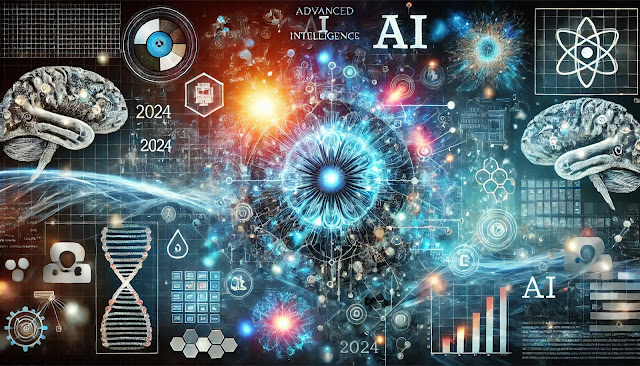Decoding Data Dynamics: Navigating the Nuances of Modern Analytics!
Welcome to the thrilling world of data analytics, where each click, swipe, and search not only tells a story but also propels businesses forward. As we navigate through terabytes of data in the digital age, mastering data isn't just a strategic advantage—it's essential for survival. Strap in and prepare to decode the complexities of data analytics across various sectors, explore the arsenal of tools at our disposal, and confront the challenges and ethical dilemmas that keep data scientists on their toes. Are you ready to transform data into decisions? Let's dive into this comprehensive exploration!
1. Trends in Data Analytics
- Machine Learning Mastery: Machine learning algorithms are not only predicting user behaviour but are becoming adept at automating complex decision-making processes.
- AI Integration: Artificial intelligence is increasingly being integrated into analytics, enhancing the speed and accuracy of data interpretation.
- Big Data Convergence: The merging of traditional analytics with cutting-edge big data practices is not only expanding analytical capabilities but also revolutionizing industry standards.
2. Case Studies of Successful Data-Driven Projects
- Retail Revolution: In retail, data analytics has optimized inventory levels and personalized shopping experiences through precise customer behavior predictions.
- Healthcare Innovations: Predictive analytics in healthcare has improved diagnostics and personalized treatment plans, significantly altering patient care.
- Financial Forecasts: In finance, data analytics has enhanced risk assessments and fraud detection, securing financial assets and optimizing portfolio management.
3. Data Analytics Tools and Technologies
- Python: Offers extensive libraries for statistical analysis and machine learning, making it ideal for varied analytical tasks.
- R: Preferred for statistical experiments due to its comprehensive ecosystem of packages.
- SQL: Essential for data extraction and manipulation, making it a cornerstone for any data analyst.
- Tableau: Known for its user-friendly interface, it excels in creating engaging visualizations.
- Power BI: Best for seamless integration with other Microsoft services, providing robust analytics capabilities.
4. Challenges in Data Analytics
- Dirty Data Dilemma: Dealing with erroneous or incomplete data remains a significant challenge, requiring meticulous cleaning processes.
- Privacy Predicaments: Ensuring privacy while managing vast amounts of sensitive data demands rigorous security measures.
- Skills Shortage: The high demand for data-savvy professionals continues to outpace the supply, creating a notable skills gap in the industry.
5. Interviews with Industry Experts
- Insider Insights: Experts emphasize the importance of curiosity and the ability to distil complex data into clear, actionable insights.
- Future Forecasting: Predictions suggest a shift towards more automated and real-time data processing systems, highlighting the need for continual learning and adaptability in the field.
6. How to Start a Career in Data Analytics
- Skill Building: Begin with a solid foundation in statistics and a familiarity with tools like Python or R.
- Learning Pathways: Engage in online courses, bootcamps, and certification programs to boost technical knowledge.
- Practical Experience: Gain hands-on experience through internships or personal projects to build a compelling portfolio.
7. Ethics in Data Analytics
- Bias and Fairness: Addressing issues of bias in algorithms and ensuring fairness in data usage are paramount for ethical data practices.
- Data Protection: Establishing and adhering to stringent data privacy policies is crucial to maintaining public trust and compliance with regulations.
8. Impact of Data Analytics on Society
- Urban Enhancements: Data analytics is at the forefront of improving urban planning and public transportation systems.
- Healthcare Evolution: Personalized medicine and enhanced diagnostic tools are just a few of the healthcare improvements driven by advanced analytics.
- Environmental Monitoring: Analytics aids significantly in environmental protection efforts by enabling more effective pollution monitoring and resource management.
9. Advanced Analytical Techniques
- Predictive Power: Exploring how predictive analytics uses historical data to forecast future events, aiding in proactive decision-making
- Neural Network Applications: Discussing the use of neural networks in interpreting complex data structures for tasks like image recognition and automated translations.
10. Data Visualization Best Practices
- Chart Selection: Choosing the appropriate chart types to accurately represent complex datasets.
- Design Simplicity: Maintaining simplicity in design to enhance understanding while ensuring aesthetic appeal.
- Color Usage: Utilizing color strategically to highlight key data points and guide the viewer’s attention effectively.
Conclusion
The journey through the data analytics landscape is as daunting as it is exhilarating. With the right tools and an ethical approach, the potential to unlock meaningful insights and make informed decisions is immense. Whether you're just starting out or seeking to deepen your data expertise, the world of analytics promises a challenging yet rewarding adventure.





Comments